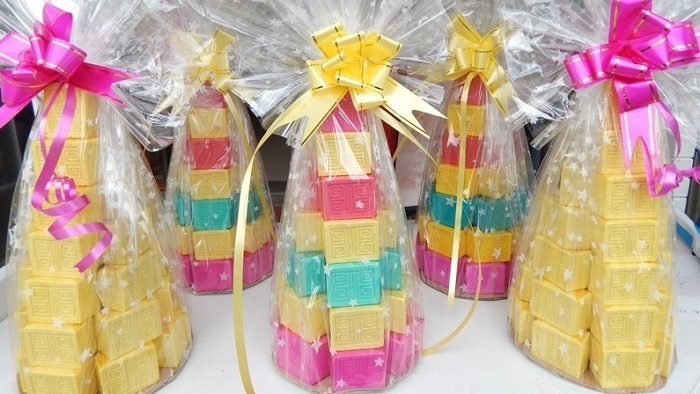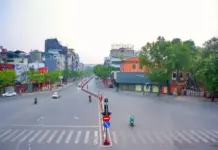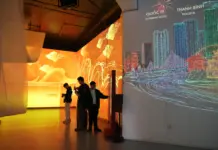Located on the banks of the Huong (Perfume) river in Hue city, Kim Long village is famous for the making of banh in, a traditional five-coloured cake made from green beans and sugar. The cake is commonly known as banh ngu sac (five-coloured cake) as it is wrapped with glossy glass paper in five colours – pink, green, yellow, orange and red.
The cake is an indispensable offering to the ancestors during ceremonies and rituals, particularly at Tet festival.
Kim Long villagers are often busy with making banh ngu sac for Tet from the eighth lunar month of the year, for which they get up early in the morning to prepare the ingredients, often continuing after a long hard-working day late in the evening.
According to Mai Thi Hau, who has more than 20-years of experience in the craft, her shop makes approximately 5,000 cakes every day in various shapes and sizes, generating stable incomes for its employees.
Elders in the village say that decades ago, the making of banh in was practiced by dozens of local households, and the entire process was done manually. However, only around ten are now still practicing the craft, despite the support of machines in the roasting, grinding and pounding steps.
A tray of colourful crispy rice treats, a typical dish of Mau Tai villagers (Photo: khamphahue.vn)
Meanwhile, Mau Tai and Lai An villagers in Phu Mau commune, Phu Vang district are appreciated thanks to their crispy rice treats in assorted colours of yellow, red, green and white, used for offering in rituals and ceremonies in Hue city.
Phan Dung’s family is the only facility in Mau Tai village which still produces crispy rice treats manually without support of machines.
The old man who has 30 years of experience recalled the busy atmosphere in the olden days when villagers both young and old were eagerly making the crispy rice flakes. However, as the job requires a lot of work and time, the craft is now practiced by fewer villagers.
In addition to making crispy rice flakes, Lai An village is also home to Sinh worshipping painting, which stands together with Dong Ho and Hang Trong folk paintings as a Vietnamese folklore art. While Dong Ho and Hang Trong paintings are hang for decoration, the Sinh painting will be burnt after worship.
Sinh paintings reflect people’s innermost feelings, wishes and simple dreams.
The Sinh paintings are made using just one printing-board which is created from jack wood. It is durable, worm resistant and easy to carve to create the drawing lines and black shapes. After being printed in black, the work is sometimes completed with embellishments made with colourful lines. Some paintings are still printed on rustic paper.
The months before Tet are the busiest time for Lai An villagers, who make tens of thousands of paintings to meet the increasing demand of customers.
Sinh worshipping paintings feature people, objects, and animals, and are used for worshipping.
Today, around 200 households in Thua Thien – Hue province are still practicing the making of Sinh painting, with roughly 70 of these located in Lai An village.
Despite rapidly changing lifestyles, craft villagers in Thua Thien – Hue province have still preserved and promoted the traditional crafts handed down by their ancestors through generations, contributing to safeguarding the national identity and value of Vietnamese Tet festival.



.jpg)


